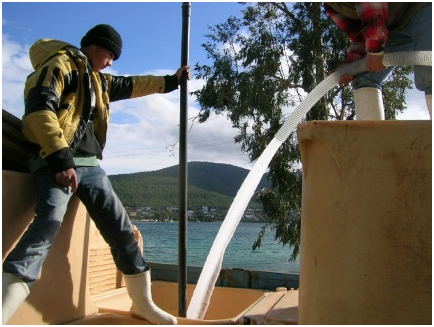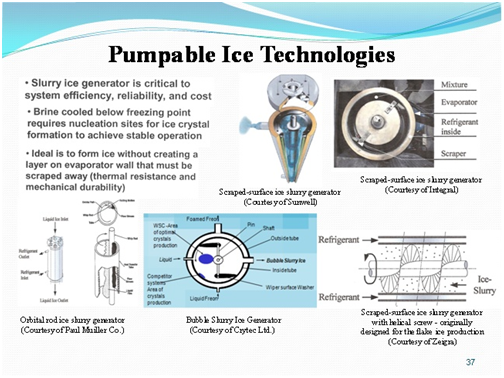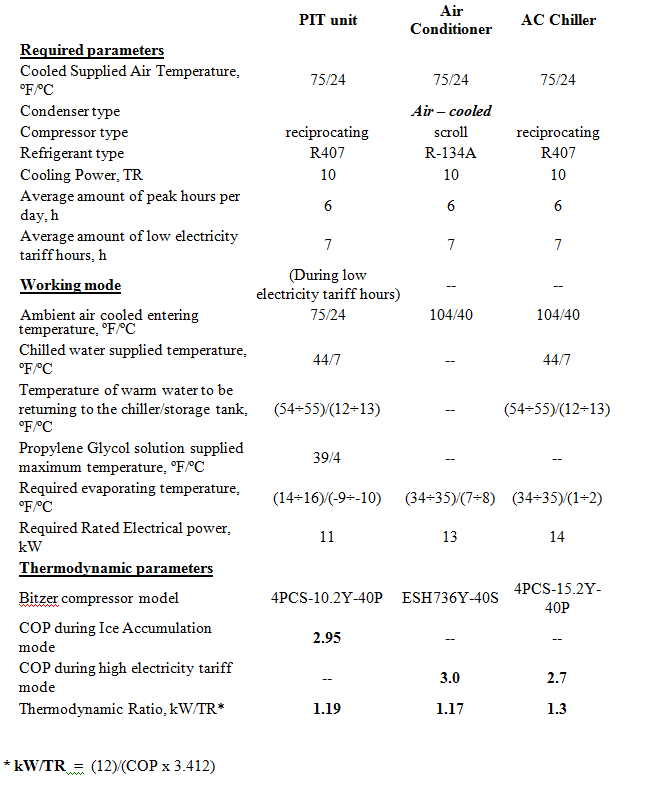Implementation of “energy” storage system for home application and small business
This problem can be solved by using the small TESS (SESS) in order to shift a peak demand from day to night. In this context SESS can be the best solution not only from the technical point of view, but also for economical reasons.
The key for distributed energy is not only because it can be cheaper. The key is national security - it is not needed for a huge storage (device) that can be blown up. The storage units would be the size of a relatively small "backyard transformer," each wired to provide enough energy for one, two and more houses. Aggregated, hundreds of these units (SESS) controlled by utility companies effectively do the same as one big storage unit. In addition, it is often required to provide power to residences in remote areas where extension of the existing distribution system might not be economically feasible. In such cases, a combination of the existing system and energy storage systems can be a viable alternative to traditional methods of power delivery.
The concept of thermal energy storage has become a practical reality. Utility companies are now installing energy storage systems on their distribution circuits to gain experience with these new distributed power resources and to determine how best to use them for both planned applications and contingency events. On the other side, it is difficult for these companies to regulate and manage the cooling energy demand required by the private sector during summer and winter seasons in the afternoon and evening times. This peak in demand comes from many homes simultaneously using home air conditioning units. This surge in use of home air conditioning can raise the demand for electricity to a level that the electricity company cannot support it. Under current conditions with the available power, this trend will only grow, and therefore electric companies are under pressure to treat the problem. Possibilities for the consumer to control the energy burden on his end using alternative energy choices are accepted today around the world.
Different technologies can be used to store thermal energy. Advantages and disadvantages of these technologies have to be taken into account in order to find the most suitable application for each SESS system. Implementation of “energy” storage systems (“cold” – ice based, “hot” - warm water based) in private homes can answer the peak in demand problem, allowing the consumer to save energy expenses for air conditioning and home needs on one hand, and permitting electric companies to control the demand of the installed power and straightening the load curve, on the other hand. There are many reasons for the immediate implementation of SESS for private and small business. The main are:
• Savings in energy expenses and client’s payments for air cooling and water heating by shifting the load to low demand hours and therefore taking advantage of the low tariff of kilowatt-hour;
• Reducing the need for new power plants and new transmission lines;
• Lowers electric transmission congestion during peak periods;
• Increasing daily efficient of power plants;
• Reducing the national demand peak;
• Using less polluting nighttime power, reducing CO2 emissions;
• Reducing dependence on nonrenewable fuels.
In general, there are used four types of TESS based on cooled water, phase changed material, crystal ice and pumpable ice accumulation during the night (relatively low electricity tariff hours). During peak hours (highest electricity tariff of kWh) accumulated energy can be used without a “switching on” of compressor. Instead of high required power compressor, during utilization mode (high electricity tariff) there will work only lacking power pump of cooled liquid.
Air-conditioning engineers and designers know well advantages and disadvantages of the above mentioned technologies, the main from which are initial and operating costs.
Until the end of 20th century TESS based on cooled water accumulation were the most used. There are hundreds of manufactures and many thousands of ice TES systems used globally in primarily small-to-medium-sized applications averaging 2,000 to 3,000 TRh per installation.
Only from the beginning of 21st century two US companies (Ice Energy and Trinity Thermal Systems) began to sale Residential Energy Storage Systems (RESS) for the huge private segment and small businesses of 30 ÷ 200 TRh accumulated cold energy. There is used the same concept like for large TESS but the energy efficiency (Coefficient of Performance, COP, kW/kW) of RESS during the night hours ice production is enough (very closed to COP of cooled water chiller working mode during peak hours) in order this concept will be attractive, economical expedient for a small business or private client (ROI is about 3 ÷ 6 years).

Fig.1 Possible configuration of any well-known AC with RESS
Implementation of RESS based on the accumulation of crystal ice is delayed because of the following reasons. Pricing structure (peak, part-peak, off-peak) is not as advanced as in Israel. For example, in San-Francisco (USA) user-homeowners have the maximum difference of 3.54, not 4.5. Then, out of nearly 5 million accounts (homeowners with individual counters), only about 150 thousand (3%) in general chose to enjoy from TOU - Time of Use, that is, go to the schedule of prices for electricity, taking into account the different prices at different times of the day. Others enjoy the old rate constant. Here there is no coercion. There is every reason to assert that the further introduction of SESS associated with impressive results in a significant increase in the energy efficiency of machines, realizing the Pumpable Ice Technology (PIT). The main target of PIT is to produce a cooling medium with viscosity like water and cooling capacity like ice (Fig.2).

Fig.2 Pumpable Ice
Already, due to PIT, it is possible to produce 1,000 kg of pure ice at the energy expenditure of (60÷75) kWh instead of (90÷130) kWh required for production of regular ice (plate, flake, shell types). At this moment several international companies (Fig.3) sale with success large TESS (based on PIT) in Europe, USA, Japan.

Fig.3 Pumpable Ice Technologies (PIT)
During nearest 1-2 years, taking into account the technical promotion of PIT, it is a real situation of development of improved SESS with the following technical parameters (Table 1):
Table 1. PIT unit vs.
Air Conditioner and AC Chiller Energy expenses Comparison (Preliminary example)

It is obvious that for real working conditions of the improved PIT unit and air-conditioner, their coefficients of performance are about 3. With the above mentioned technical data, taking into account a possible price of improved PIT units of 18,000 $US for a size residence footprint of 200m² and the required cooling capacity of 10TR (in comparison with 10,000 $US of the existing AC system), the preliminary Return of client Investment (ROI) is about 3 ÷ 5 years.
Due to the possible achieved results, people may even want to go to the TOU, or, the utility company may establish special rates for users. On the other side, it is seemed more realistically, to try improved PIT system on a commercial account, i.e. all kinds of small-sized businesses, where air-conditioning takes huge amounts of money. It is most beneficial, at this moment, to price ratios at different times of the day. For example, the number of small businesses (one- or two-stage office buildings of various sizes) is enormous – only in San-Francisco there are approximately 400 thousand accounts. All of them work in the California climate.
It is required only to begin a production of improved PIT systems. Time and situation in the world do not way our decisions. Let’s say: hope to the best, be prepared to the worst but better hope to the best.
About the Author: Boris M. Menin PhD., Msc.
The designer - consultant on technical solutions for the development of systems and equipment for cooling and freezing of food products and beverages, designing high-efficient refrigeration equipment for the production of ice of various types and structure, including machines for the production of pumpable ice. Member of ASHRAE and the Union of Electrical and Electronics Engineers in Israel. A graduate of the Electrical Communications Institute, St. Petersburg, Russia, 1973, a graduate of the department of heat and mass transfer (Prof. Guygo EI) (Ph.D.) at the Technological Institute of Refrigeration Industry in St. - Petersburg, Russia, 1981 year. From 1984 to 1990, from 1997 to 2009 he worked as a chief scientist (CTO) in research and development companies, involved in research and development equipment for the production of ice, frozen fish, frozen beverage manufacturing, design equipment for the spray of ice crystals to surface cleaning, developing and implementing industrial energy storage systems. Supervised individual areas of European research and development including EUREKA and FP6. Dr. Menin has published 2 books, 11 patents, including 6 in the United States, 4 USSR inventor's certificate, 18 articles in the ice-making, increase efficiency chillers and energy storage systems.

